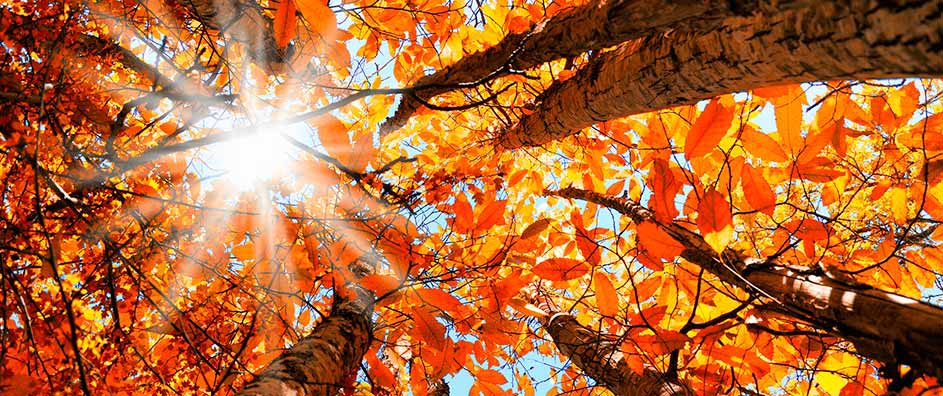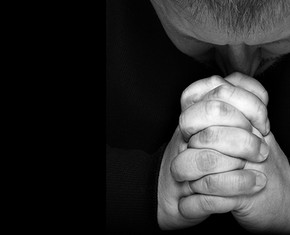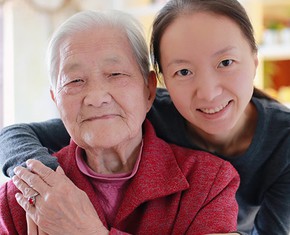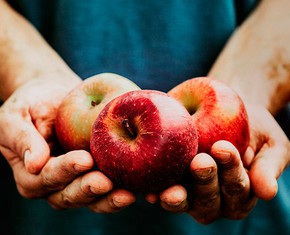The views expressed in our content reflect individual perspectives and do not represent the authoritative views of the Baha'i Faith.
Can you imagine our world without colors?
Almost everything in creation has a color. We rejoice when we see certain colors, and others can make us sad and troubled. That colors have an effect on human beings is probably as old as philosophy.
In his Theory of Colors, Goethe says: “Colors are light’s suffering and joy.” Colors can delight us and reflect the Baha’i principle of “unity in diversity,” like the colors of the flowers in a garden, an image that Abdu’l-Baha frequently uses in his writings. But he also stressed, especially in his talks about racism in the United States, that colors can cause prejudice:
There are no whites and blacks before God. All colors are one, and that is the color of servitude to God. Scent and color are not important. The heart is important. If the heart is pure, white or black or any color makes no difference. God does not look at colors; He looks at the hearts. – Abdu’l-Baha, The Promulgation of Universal Peace, p. 44.
Here we reach a realm where all colors merge into one—the “color of servitude to God.” If we overlook outward differences, serve God and worship God with a pure heart, we fulfill the purpose of creation. In this sense, we submerge ourselves in the color of God.

Colors can also distract us in this world from our main purpose, meaning that if we dive into materialistic pleasures we can forget about God. In Baha’u’llah’s words:
O Children of Vainglory! For a fleeting sovereignty ye have abandoned My imperishable dominion, and have adorned yourselves with the gay livery of the world and made of it your boast. By My beauty! All will I gather beneath the one-colored covering of the dust and efface all these diverse colors save them that choose My own, and that is purging from every color. – The Hidden Words, pp. 47-48.
In Baha’u’llah’s theory of colors, so to speak, the kingdom of God is one transcendent, all-unifying color, which stands for detachment from the physical world and attachment to the spiritual:
O servant of God! The One Who is the Master of utterance and meaning, and colors all created things, sayeth: Meditate on that which We have revealed aforetime: “the color of God, and who is better than God in coloring?” (Qur’an 2:138) The purpose of this color hath not been and will not be colors of metallic pigments. Nay, it is the coloring of the pure hearts with the color of God, and this is the sanctification of all men from the diverse colors of the world. Strive thou that thou mayest excel in this art and adornest men with the divine color. -from a Tablet of Baha’u’llah, provisional translation by the author.
The Qur’an, in verse 2:138 (quoted above), also calls humanity to put on “the color of God.” This occurs in the context of the prophet Abraham’s religion, called the primordial or pristine religion of God—the archetype for humanity’s original faith in one God. In fact, every messenger of God calls for this immersion in the unified color of God. Baha’u’llah came to unite humanity in “one common Faith” and transform humankind into a new creation with a new, spiritual, baptism:
O Pen of Revelation! Call thou to mind the Baptizer [lit. “the Dyer”, i.e. John the Baptist]. Say: The Day of baptism hath come. Blessed is the one who hath baptized himself with the baptism of God. It is, verily, his detachment from all else but Him. Thus commandeth you the Pen of the All-Glorious as decreed by your Lord, the Almighty, the All-Wise. – from a Tablet of Baha’u’llah, provisional translation by the author.
Christian texts of the late Antiquity also relate baptism to coloring, and emphasize the transformative and healing aspects of baptism in purifying humans. Just read this striking passage where God is called “the Dyer,” the same expression that Baha’u’llah uses:
God is a dyer. Like the good dyes—they are called the ‘true’ (dyes) — die with those (things) that have been dyed in them, thus it is with those whom God has dyed. Since His dyes are immortal, they become immortal by means of His remedies. But God dips/baptizes those whom He dips/baptizes in water. The Gospel of Philip, 61.12–20.
In other words, as good and true colors/dyes become one with or “die with” the items dyed, so God’s immortal colors/dyes imbue those whom God dyes with immortality during baptism. Baha’u’llah calls this act an “art” and echoes an ancient idea in which the art of dyeing is seen as divine and literally as the art of transformation.
The kingdom of God is an all-unifying color, a domain where we die in God and God dyes us!
















Comments
Sign in or create an account
Continue with Googleor